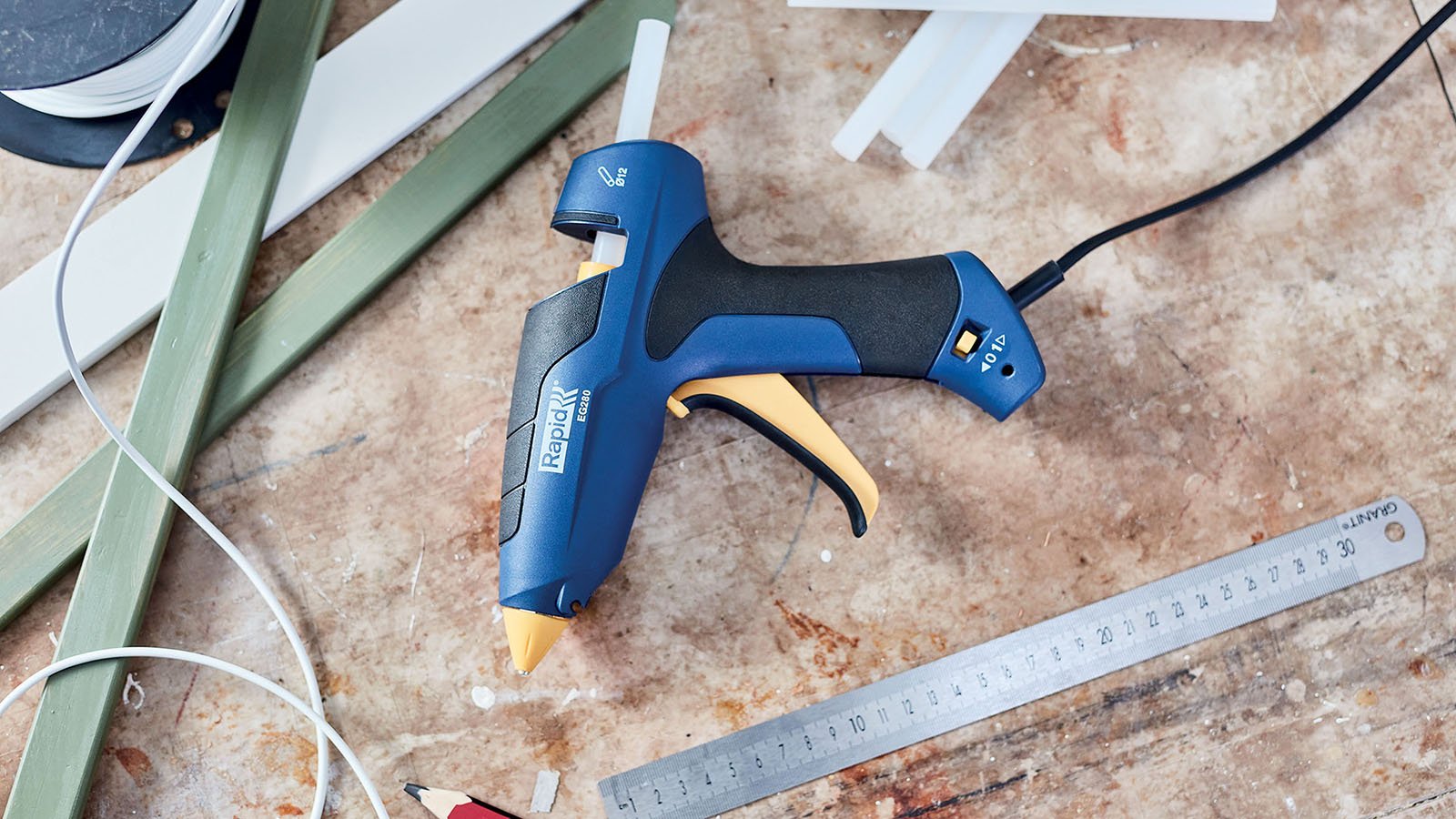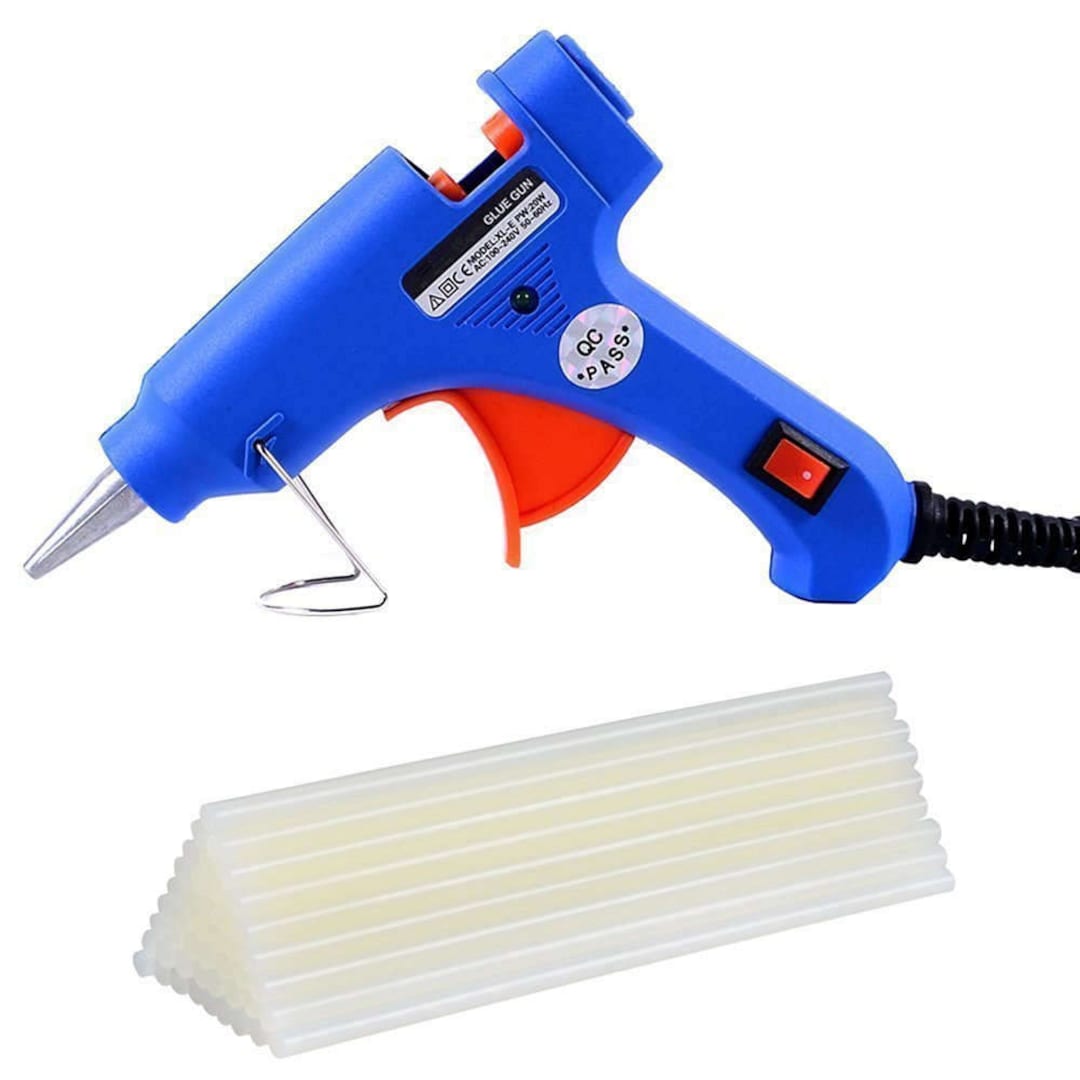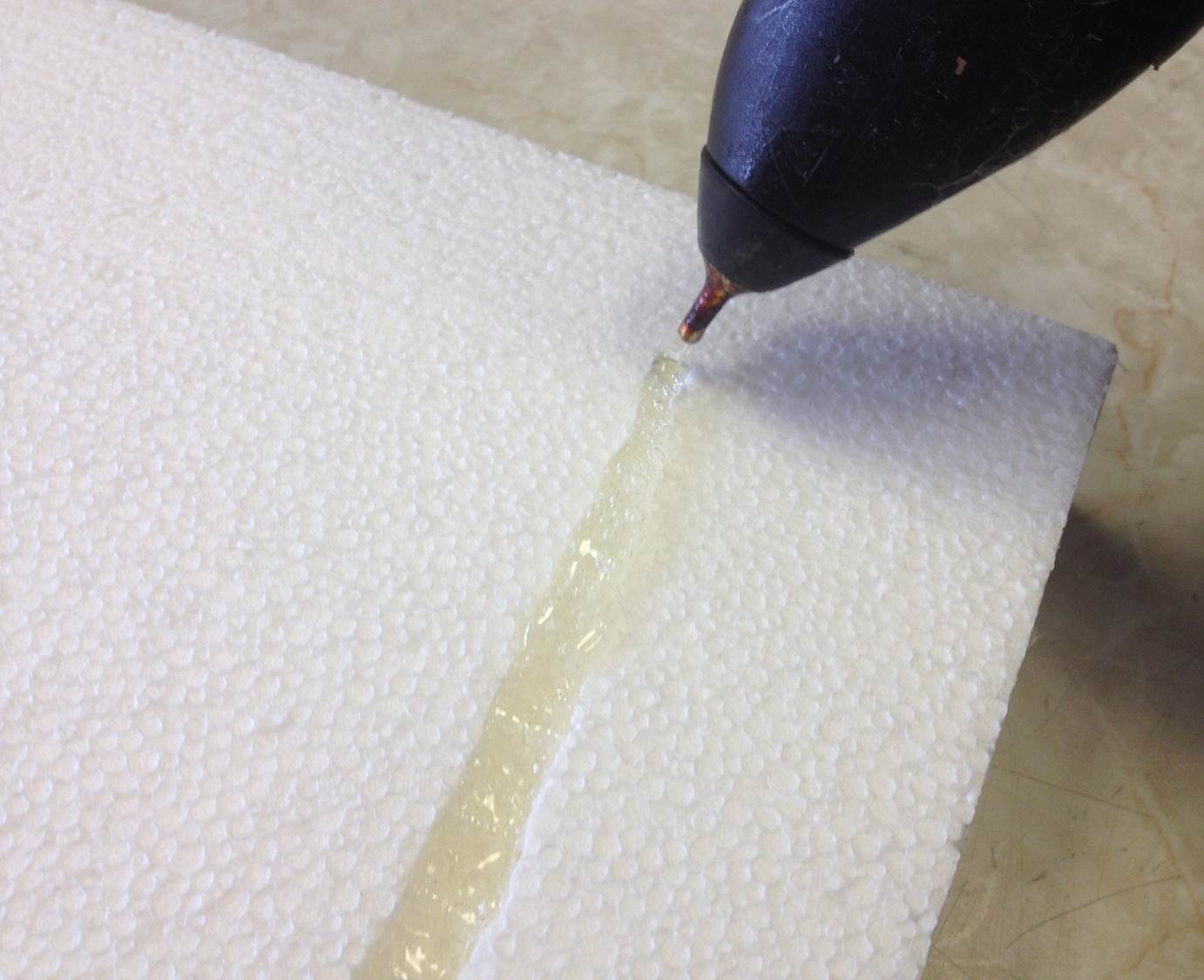What temperature should you use for glue? This is a difficult question to answer, as the temperature will depend on the type of glue you are using. For example, hot glue is typically used at a temperature of between 120 and 150 degrees Fahrenheit, while super glue is typically used at a temperature of between 70 and 80 degrees Fahrenheit. So, the best answer to this question is to consult the instructions that came with your glue. They will likely have the best advice on what temperature to use for your specific type of glue.
Hot melt glue how does it work

Hot glue guns work by melting a stick of hot glue and then dispensing it through a nozzle. The glue sticks are made of a material that melts easily, such as wax, and a resin that is hard at room temperature. When the glue stick is inserted into the gun, it melts and is ready to use. The temperature of the glue gun varies depending on the model, but most glue guns operate at around 190 degrees Fahrenheit. The glue sticks are designed to melt at this temperature, so that the glue can be easily dispensed.
When the trigger is pulled, the glue stick is forced through the nozzle and the melted glue is dispensed. The glue quickly cools and hardens, so it can be used to bond two surfaces together. Hot glue guns are a versatile tool that can be used for a variety of projects. The glue can be used on a variety of materials, including paper, plastic, fabric, and wood. Hot glue guns are relatively inexpensive and can be found at most hardware stores.
What does hot melt glue bond with?
Hot melt glue bonds with a variety of surfaces, including metal, plastic, glass, and paper. The temperature of the glue determines the strength of the bond. Hotter temperatures result in stronger bonds.
Is hot glue stronger than super glue?
hot glue and super glue are both strong adhesives. However, hot glue is typically stronger than super glue. This is because hot glue is designed to withstand high temperatures, while super glue is not. So, if you’re looking for a strong adhesive that can withstand high temperatures, hot glue is the way to go.
Can hot glue fix anything?
Yes, hot glue can fix a variety of things. It is a versatile adhesive that can be used on a variety of materials, including plastic, metal, glass, and fabric. Hot glue is also resistant to extreme temperatures, making it ideal for use in a variety of applications.
Is hot melt glue permanent?
Hot melt glue is not permanent, however, and will eventually break down with repeated exposure to heat or other elements.
Does hot glue peel off easily?
If you’re trying to remove hot glue from something, the best way to do it is to heat it up. You can use a hair dryer, a heat gun, or even a lighter to heat up the glue. Once the glue is heated up, it should peel right off.
Is hot glue just wax?
Hot glue is made of thermoplastic resins and is used in a variety of applications where a strong, temporary bond is needed. The glue is melted by heating it to a high temperature and then applied to the surfaces to be joined. It sets quickly as it cools and can beUsed on a variety of materials, including wood, plastic, metal, and glass. So, is hot glue just wax? Well, sort of. Hot glue is actually a type of plastic that melts when heated and hardens when cooled. However, like wax, it can be used to create a strong, temporary bond between two surfaces. So, if you need a quick fix for something that needs to be joined together, hot glue is a great option!
What does hot melt glue not stick to?
Hot melt glue does not stick to surfaces that are too hot or too cold. It also does not stick to surfaces that are too smooth or too porous.
What is stronger super glue or hot glue?
Super glue is stronger than hot glue. Hot glue melts at a higher temperature than super glue, so it can be used to bond materials that won’t be damaged by the heat.
How strong is hot melt glue?
The bond formed by hot melt glue is typically stronger than the bond formed by other adhesives, such as cold glue or tape.
What temp does hot glue melt fahrenheit

Hot glue melts at around 190 degrees Fahrenheit. This makes it perfect for projects that require a strong bond, but need to be able to be re-positioned or removed later on. Hot glue is also great for projects that need to be waterproof or heat resistant, as the glue will not break down under those conditions.
How hot is a glue gun temperature?
A glue gun’s temperature can vary depending on the model and brand, but they typically operate between 375 and 400 degrees Fahrenheit. This temperature is hot enough to melt most types of glue sticks, which makes them perfect for quickly bonding materials together. When using a glue gun, be sure to exercise caution as the molten glue can cause burns.
What glue can withstand 500 degrees?
There are a few types of glue that can withstand high temperatures. For example, epoxy resin glue can withstand temperatures up to 500 degrees Fahrenheit. This type of glue is often used for bonding metal, glass, and ceramic materials. Polyurethane glue can also withstand high temperatures, making it ideal for outdoor applications or for bonding dissimilar materials.
What temperatures can hot glue withstand?
Hot glue can withstand temperatures up to 150 degrees Celsius. It is a versatile adhesive that can be used for a variety of applications, including bonding plastic, metal, glass, and wood. Hot glue is also resistant to water and moisture, making it ideal for use in humid or wet environments.
Will hot glue melt in hot weather?
The answer is yes, hot glue will melt in hot weather. However, it will take quite a bit of heat for this to happen. Hot glue is designed to withstand high temperatures, so it takes quite a bit of heat to make it melt. If you’re in a hot climate and you’re worried about your hot glue melting, just keep it in a cool, dry place and you should be fine.
What glue holds up to high temperatures?
There are many types of glue that can hold up to high temperatures. Some of these include epoxy glue, cyanoacrylate glue, and silicone glue. Each of these has their own benefits and drawbacks, so it is important to choose the right one for the job. Epoxy glue is one of the strongest and most durable types of glue. It can withstand temperatures up to 500 degrees Fahrenheit.
However, it is also one of the most expensive types of glue. Cyanoacrylate glue is another strong option. It can withstand temperatures up to 200 degrees Fahrenheit. It is also less expensive than epoxy glue. Silicone glue is the most flexible type of glue. It can withstand temperatures up to 400 degrees Fahrenheit. However, it is not as strong as the other two options. When choosing a glue for a high temperature application, it is important to consider the strength, flexibility, and cost.
Which glue is most heat resistant?
There are many different types of glue available on the market, each with its own unique set of properties. While some glues are designed for specific purposes, others are more general purpose. When it comes to choosing a glue that is heat resistant, there are a few things to keep in mind. First, it is important to know what temperature the glue will need to withstand. Some glues are only designed to withstand temperatures up to a certain point, so it is important to choose one that can handle the desired temperature.
Additionally, it is important to consider how long the glue will need to be exposed to the heat. For short periods of time, a lower-grade glue may be sufficient, but for longer periods, a more durable glue will be necessary. There are a few different types of glue that are generally considered to be heat resistant. One type is epoxy glue, which is often used for bonding metal and other materials. Another type of heat resistant glue is silicone glue, which can withstand high temperatures for extended periods of time. When choosing a heat resistant glue, it is important to consider the specific needs of the project. With so many different types of glue available, there is sure to be one that is perfect for the job.
What temp does low temp hot glue melt?
When using low temp hot glue, the glue will melt at a lower temperature. This is ideal for delicate projects or materials that cannot withstand high temperatures. To ensure that the glue melts properly, it is important to use the correct temperature.
Is there a glue that won’t melt?
There is no such thing as a glue that won’t melt. All glues will melt at some temperature. The trick is to find a glue that will melt at a temperature that is lower than the temperature you are trying to use it in. For example, if you are trying to use glue in a very hot environment, you would want to find a glue that melts at a lower temperature than the environment you are trying to use it in.
What materials do manufacturers use to make hot melt?
Manufacturers use a variety of materials to make hot melt, including polymers, resins, and waxes. The specific materials used vary depending on the application and the desired properties of the hot melt. For example, some hot melts are designed to be flexible, while others are designed to be clear and transparent. The temperature of the hot melt glue is also an important factor to consider. Hot melts are typically applied at temperatures between 150 and 200 degrees Fahrenheit.
What temperature does CPVC melt?
CPVC melts at around 176 degrees Fahrenheit. This is generally the same temperature as most glues. So, if you’re trying to glue something together using CPVC, you’ll need to make sure that the temperature is around 176 degrees.
What is the melting point of hot glue?
When working with hot glue, it is important to know the melting point of the glue. The melting point of hot glue is between 120 and 140 degrees Fahrenheit. This means that the glue will become liquid at these temperatures and will not be able to hold your project together.
What temp does latex melt at?
At room temperature, latex will melt at around 70 degrees Celsius. However, this can vary depending on the type of latex and the specific conditions. For example, if the latex is exposed to sunlight or heat, it will melt at a lower temperature.
What temperature does adhesive melt

Adhesive glue is designed to melt at a certain temperature so that it can adhere to surfaces. The melting temperature of adhesive glue can vary depending on the type of glue. For example, hot glue has a melting temperature of around 120-180 degrees Fahrenheit.
At what temperature does glue melt?
Most types of glue have a melting point between 140-160 degrees Fahrenheit. This means that if you want to melt glue, you will need to use a heat source that is hotter than 140 degrees. However, it is important to note that not all glues have the same melting point. Some glues, such as those used in electronic applications, have a much higher melting point. Therefore, it is always important to check the label or specifications of the glue you are using to determine the appropriate melting point.
What happens if glue gets hot?
If glue gets hot, it can become brittle and break. This is why it’s important to be careful when using hot glue guns. too much heat can cause the glue to break down and lose its adhesive properties.
Which glue can withstand heat?
Different glues have different temperature tolerances. For example, cyanoacrylate glue can withstand temperatures up to about 150°C, while epoxy resin glue can withstand temperatures up to about 250°C. So, if you need a glue that can withstand high temperatures, you should choose an epoxy resin glue.
Does heat weaken adhesive?
Heat can weaken some adhesives, making them less effective at bonding surfaces together. However, other adhesives actually become stronger when exposed to heat. The type of adhesive you are using will determine whether heat will weaken or strengthen the bond.
Which adhesive can sustain very high temperature?
There are many types of adhesives that can withstand high temperatures. Some of the most common include epoxy adhesives, silicone adhesives, and polyurethane adhesives. These adhesives are typically used in applications where high temperatures are a concern, such as in automotive and aerospace industries.
What happens if you heat adhesive?
When you heat adhesive, it breaks down the bond between the molecules, causing it to become less effective. The temperature at which this occurs varies depending on the type of adhesive, but is typically around 175 degrees Fahrenheit. If you continue to heat the adhesive beyond this point, it will begin to degrade and release harmful chemicals into the air.
What temperature does 3M adhesive melt?
3M adhesive melts at a temperature of around 60 degrees Celsius. This makes it ideal for use in a wide range of applications, including bonding plastics and metals. It is also suitable for use in electrical and electronic applications.
How hot can Gorilla glue get before it melts?
Gorilla Glue can withstand high temperatures before it melts. It is a strong and reliable adhesive that can be used for a variety of purposes. However, when exposed to extremely high temperatures, the glue will start to melt and lose its adhesive properties.
How hot can gorilla tape get before melting?
Like all tapes, there is a point at which the heat will cause the tape to melt. The temperature at which this happens will vary depending on the specific type of tape and the conditions under which it is being used. Generally speaking, however, the tape will start to soften and distort at around 158 degrees Fahrenheit.
Can you melt adhesive?
It can be in the form of a glue, tape, or other material. Adhesive can be made from a variety of materials, including plastic, metal, and even human skin. The ability of an adhesive to hold two surfaces together is determined by its tack. Tack is the property of an adhesive that allows it to cling to surfaces. The higher the tack, the more likely the adhesive is to hold surfaces together. Adhesive can be melted by applying heat to it. The temperature required to melt adhesive depends on the type of adhesive and the materials it is made from.